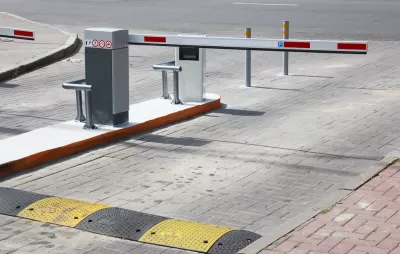It's a big day for the future of automated vehicles. Federal safety regulators gave first indication, not yet regulations, of how they expect automated vehicles to behave when they hit the road en masse.

Cecilia King reports: "Federal auto safety regulators on Monday made it official: They are betting the nation’s highways will be safer with more cars driven by machines and not people."
King is reporting big news relevant to the "autonomous future," after the U.S Department of Transportation announced the first safety guidelines for self-driving cars. According to King, the guidelines included four areas:
The Department of Transportation announced a 15-point safety standard for the design and development of autonomous vehicles; called for states to come up with uniform policies applying to driverless cars; clarified how current regulations can be applied to driverless cars; and opened the door for new regulations on the technology.
The guidelines come as advancements in the development of the driverless technology are coning quick. Just last week, Uber began offering trial rides in driverless cars to loyal customers in Pittsburgh.
President Barack Obama has also chimed in on the potential regulation of the nascent technology, publishing an editorial in the Pittsburgh Post-Gazette. In the editorial, President Obama argues that self-driving cars should make the nation's roads safer than they are now.
For additional commentary on the newly announced guidelines, Greg Gardner produced a list of ten observations and questions "after reading the highlights of the Federal Automated Vehicles policy overview, reviewing recent safety data and listening to multiple conference calls with regulators and industry officials…"
FULL STORY: Self-Driving Cars Gain Powerful Ally: The Government

Maui's Vacation Rental Debate Turns Ugly
Verbal attacks, misinformation campaigns and fistfights plague a high-stakes debate to convert thousands of vacation rentals into long-term housing.

Planetizen Federal Action Tracker
A weekly monitor of how Trump’s orders and actions are impacting planners and planning in America.

San Francisco Suspends Traffic Calming Amidst Record Deaths
Citing “a challenging fiscal landscape,” the city will cease the program on the heels of 42 traffic deaths, including 24 pedestrians.

Defunct Pittsburgh Power Plant to Become Residential Tower
A decommissioned steam heat plant will be redeveloped into almost 100 affordable housing units.

Trump Prompts Restructuring of Transportation Research Board in “Unprecedented Overreach”
The TRB has eliminated more than half of its committees including those focused on climate, equity, and cities.

Amtrak Rolls Out New Orleans to Alabama “Mardi Gras” Train
The new service will operate morning and evening departures between Mobile and New Orleans.
Urban Design for Planners 1: Software Tools
This six-course series explores essential urban design concepts using open source software and equips planners with the tools they need to participate fully in the urban design process.
Planning for Universal Design
Learn the tools for implementing Universal Design in planning regulations.
Heyer Gruel & Associates PA
JM Goldson LLC
Custer County Colorado
City of Camden Redevelopment Agency
City of Astoria
Transportation Research & Education Center (TREC) at Portland State University
Jefferson Parish Government
Camden Redevelopment Agency
City of Claremont



























